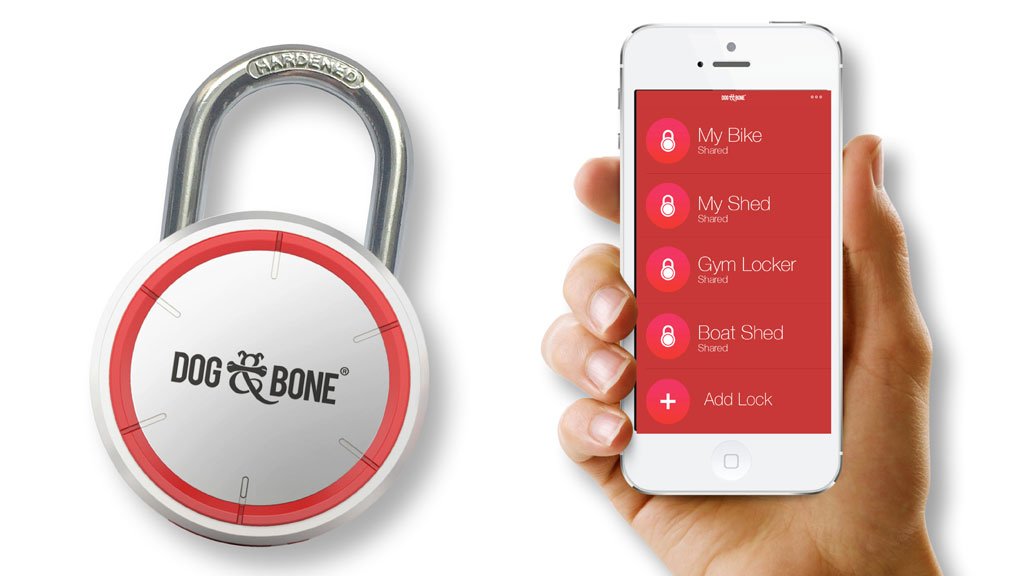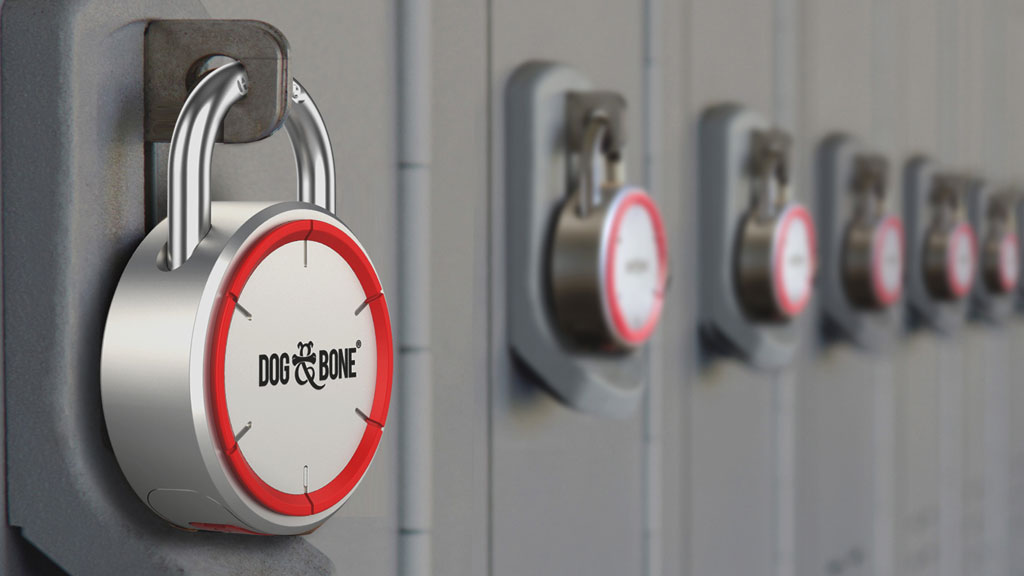Why you can trust TechRadar
Performance
In order to control the LockSmart keyless padlock, you'll need to download Dog & Bone's LockSmart app (available for both iOS and Android).
The first thing you'll need to do is create an account with Dog & Bone. This allows you to log in from any phone and take control of your padlock, meaning you don't have to worry about your padlock when you eventually get a new handset.
Once you've paired the padlock to your phone, it will appear in a list within the app. Here, you can name the padlock whatever you want, which is helpful if you have more than one of them paired.

You can choose one of three different methods of unlocking your LockSmart padlock. Tap to unlock is the least secure method, simply allowing you to tap on a picture of your selected padlock to open it up. Touch ID (or Fingerprint on Android phones) is much more secure, allowing you to use your phone's fingerprint sensor to unlock the LockSmart – something only you can do. If your smartphone doesn't have a fingerprint sensor, you can also use Passcode mode.
Though the app is nicely designed and very easy to use, we did occasionally get a "Bluetooth session timed out" message on our first attempt at unlocking the LockSmart. When this did happen, we'd simply try again and the device would unlock as normal.
One of the best features of the LockSmart keyless padlock is the ability to share unlocking privileges to up to 50 people. This allows multiple people to use the lock without having to share keys or get extras made.
The LockSmart app lets you invite a new user by sending a person on your phone's contact list an SMS with instructions explaining how to download the app and connect to your padlock.
Admittedly, the LockSmart would sometimes find itself overwhelmed if more than one person would try to connect to it at around the same time. In these instances, one person would keep complete control while the other would be left searching for a connection.
Thankfully, once the other person's connection dropped out (after a minute or so), control would transfer over to the next person. While that scenario can be slightly annoying, it isn't one that would come up with much regularity.
Another drawback to having a Bluetooth-enabled padlock is that it needs to be recharged. Thankfully, the LockSmart goes into Power Save Mode when it isn't being used, providing you with up to 2 years of functionality before it needs to be recharged again.
You also don't have to worry about the padlock running out of battery, as you can check your lock's battery level at any time (within range of the device) from your LockSmart app. You'll also receive prompts and notifications reminding you to recharge.
Having used our review unit for a couple weeks, with regular unlocks several times a day, our LockSmart is still at a full 100% charge, so it's easy to believe that it'll last as long as it says it will before needing to be plugged in again.

Stephen primarily covers phones and entertainment for TechRadar's Australian team, and has written professionally across the categories of tech, film, television and gaming in both print and online for over a decade. He's obsessed with smartphones, televisions, consoles and gaming PCs, and has a deep-seated desire to consume all forms of media at the highest quality possible.
He's also likely to talk a person’s ear off at the mere mention of Android, cats, retro sneaker releases, travelling and physical media, such as vinyl and boutique Blu-ray releases. Right now, he's most excited about QD-OLED technology, The Batman and Hellblade 2: Senua's Saga.
